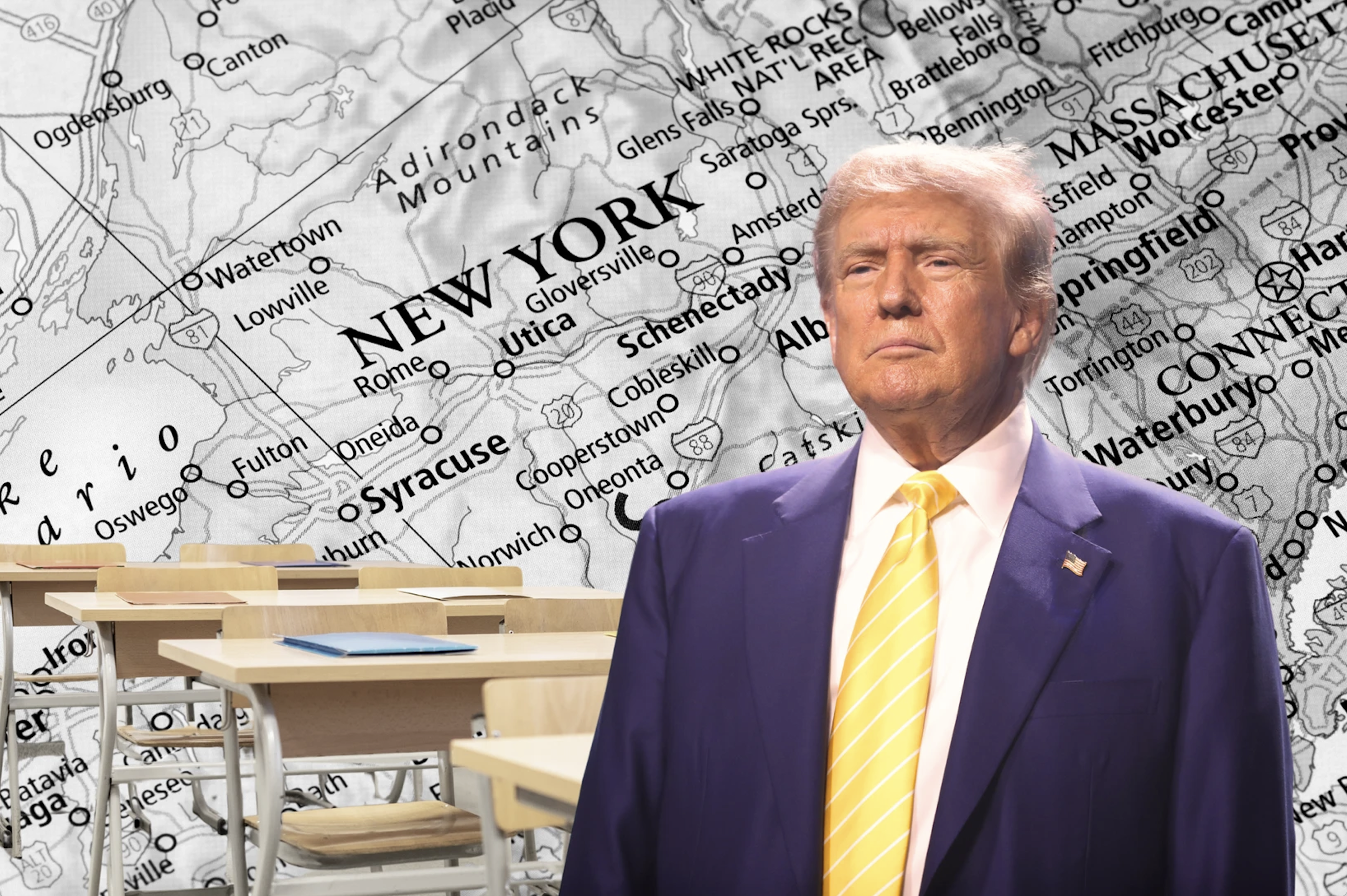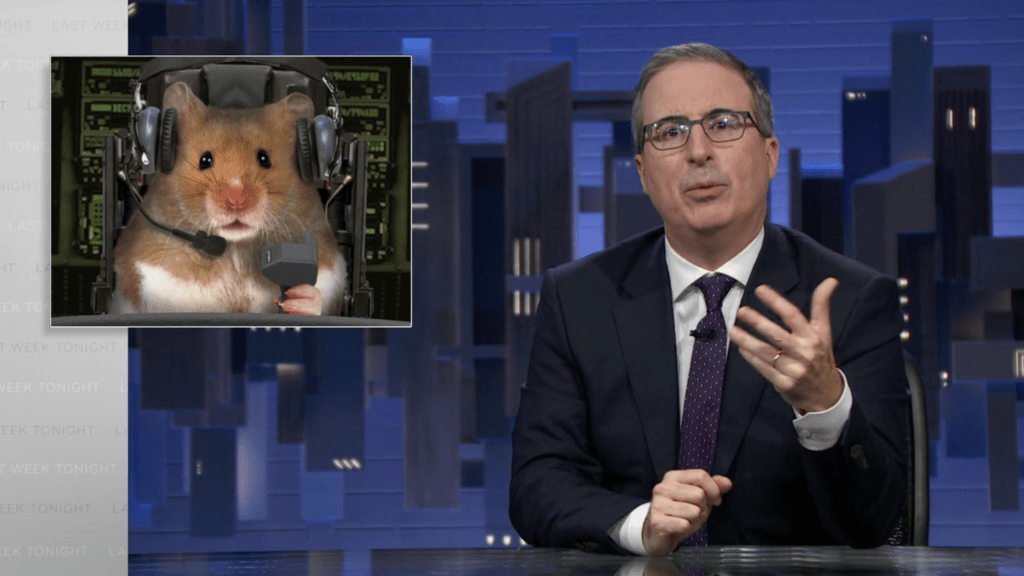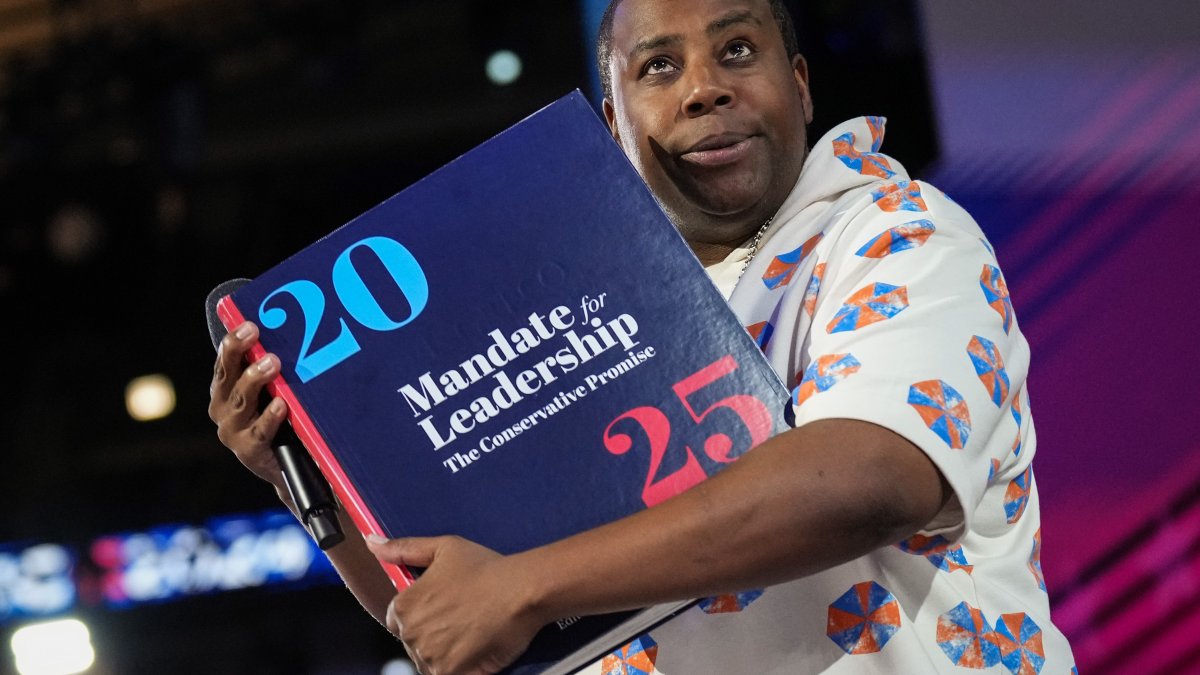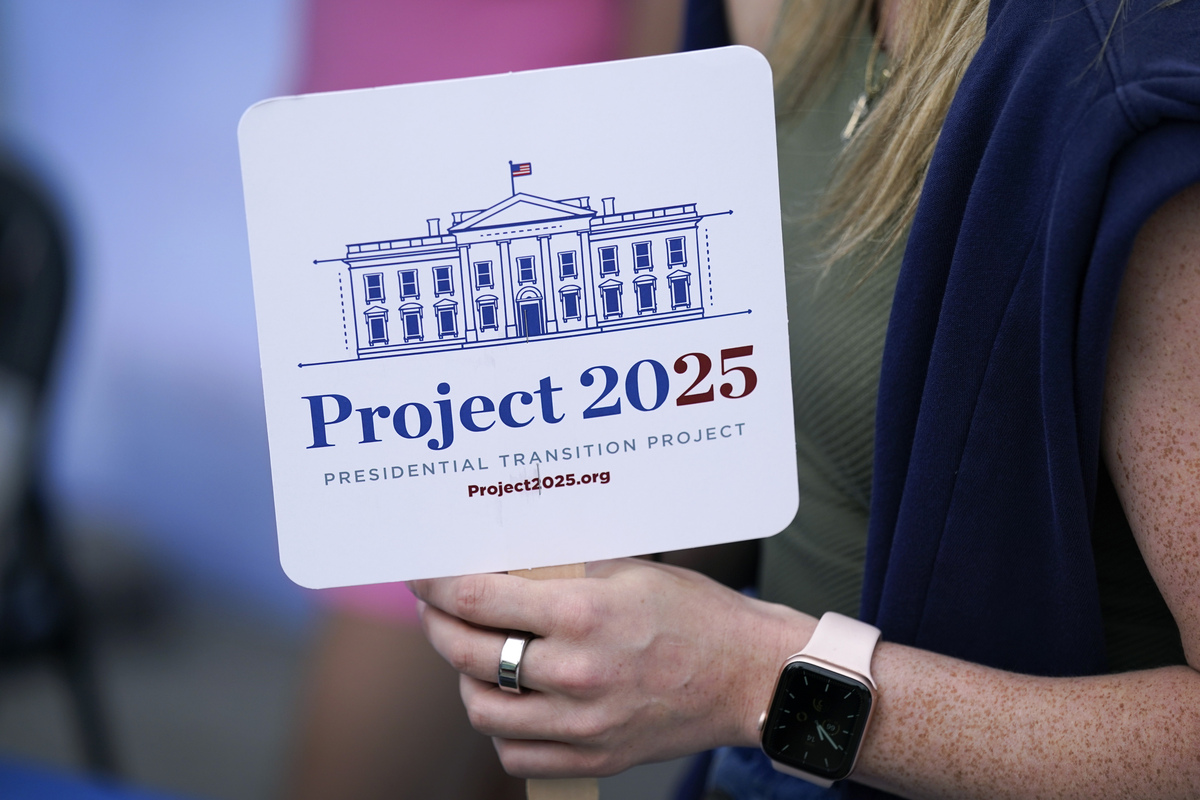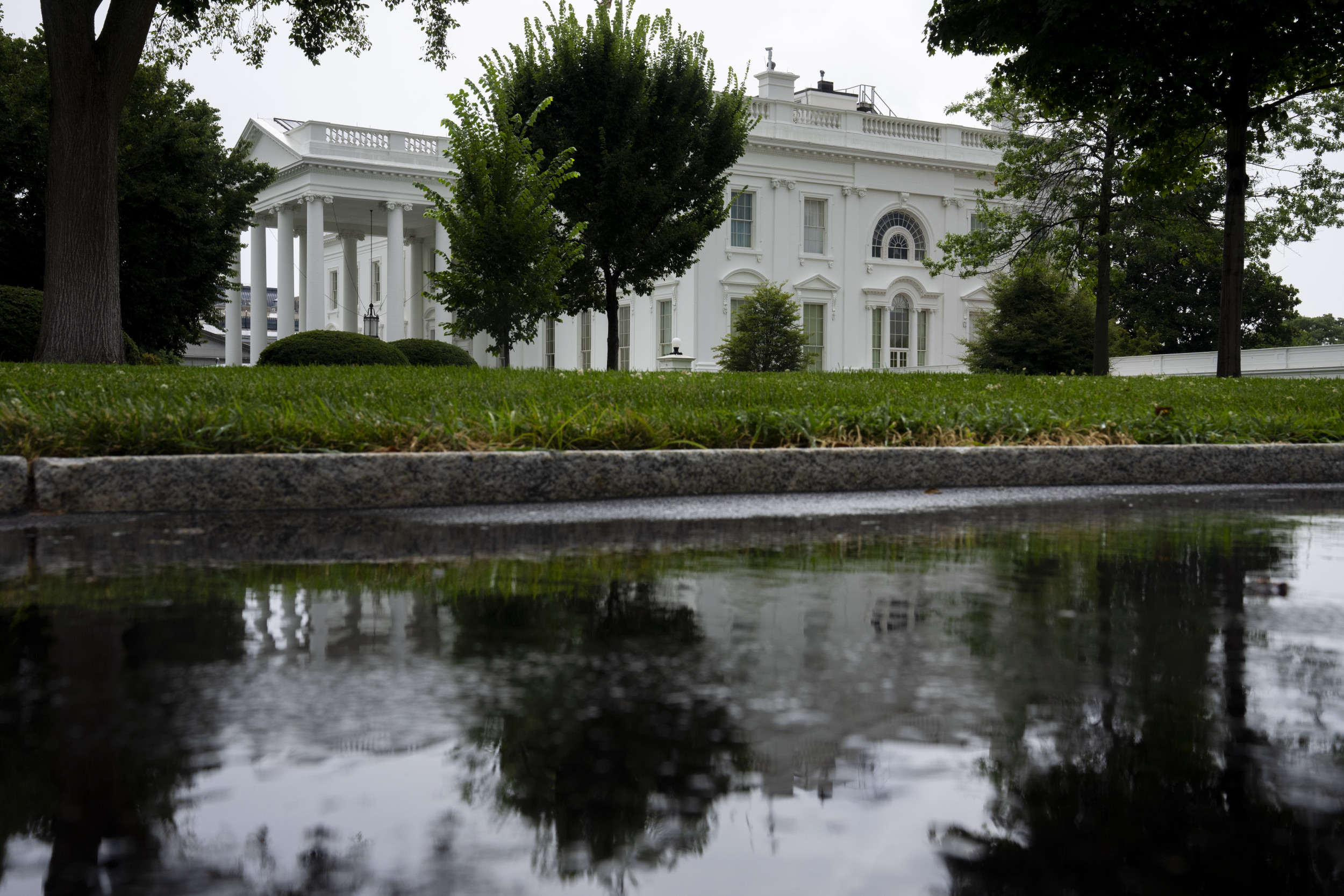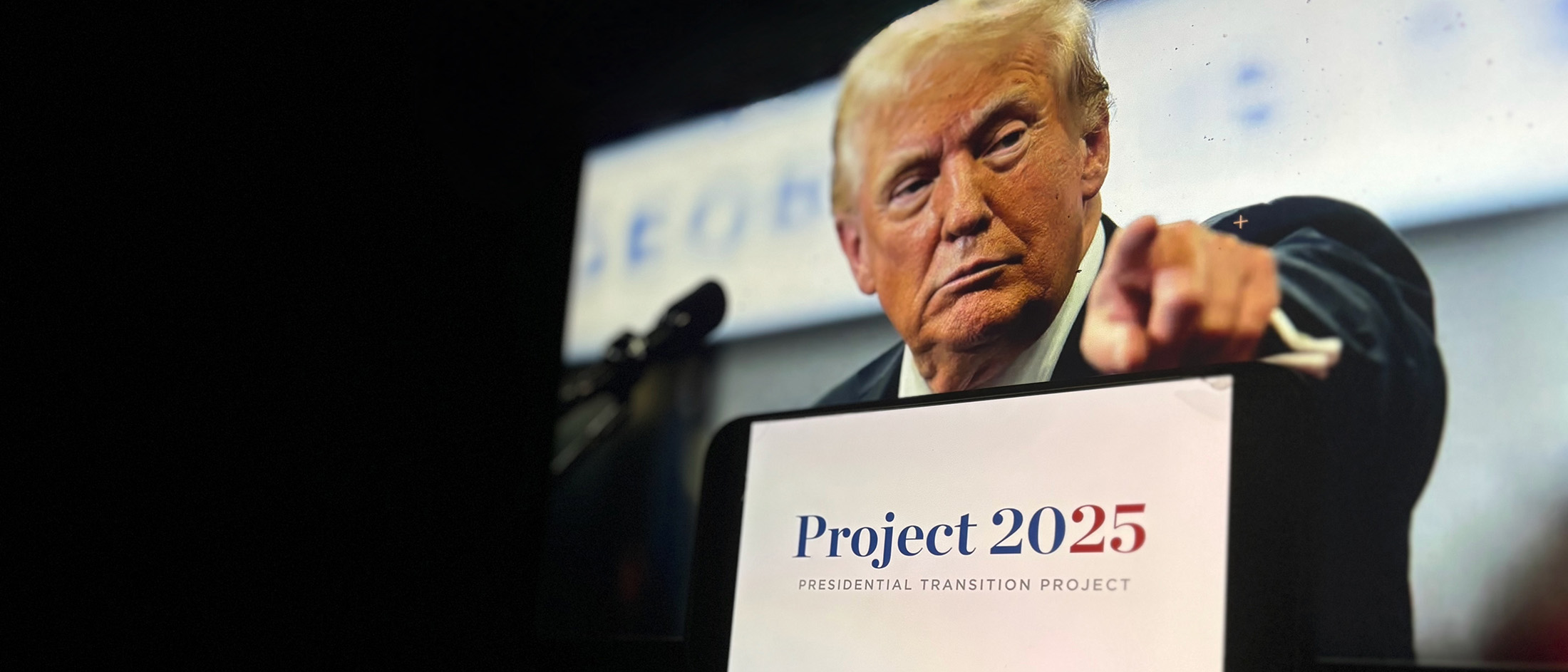Originally by Bianca Fortis at https://nysfocus.com
President-elect Donald Trump hasn’t yet laid out a detailed plan for his administration’s education policy. But a review of his first term and his campaign promises, as well as the details contained in the 2025 Presidential Transition Project, gives some indication of what might be coming in New York.
Trump, who has falsely claimed that the US ranks last in education, has repeatedly vowed to eliminate the $79 billion US Department of Education. “I’m dying to get back to do this,” he said in September. Whether he succeeds will depend on whether he has congressional support.
Late Tuesday, Trump announced his pick for Secretary of Education: Linda McMahon, who oversaw the Small Business Administration during Trump’s first term and co-founded the WWE wrestling empire.
McMahon is the chair of the America First Policy Institute, which has assisted Trump’s transition team. The think tank’s policy proposals for education center on school choice, allowing parents to evaluate curriculum materials, teaching life skills like financial and digital literacy, and prohibiting the teaching of Critical Race Theory.
While education advocates wait for Trump to take office, they are bracing for changes in how public education is administered.
“We don’t know yet what will happen,” said Randi Levine, the policy director of Advocates for Children of New York, “but many of the policy proposals raised would be devastating for the students we serve.”
Cuts to federal school funding
Regardless of whether the Department of Education closes, Trump can seek to limit federal aid to schools — something he repeatedly tried to do during his first term.
His administration proposed a number of cuts to the education budget, including appropriations for Title II, which mainly aims to help states and districts pay for teacher development and reduce class size; Title IV, which administers postsecondary federal student aid; and funding for after-school and summer programs for low-income students. Congress rejected these cuts.
This time, Trump’s allies have had more time to lay the groundwork for their proposals. The nearly 900-page Project 2025 report, published by the Heritage Foundation, a conservative think tank, lays out ideas for downsizing and reshaping federal agencies — including the elimination of the Education Department. While Trump has sought to distance himself from the playbook, at least 140 people who worked within his first administration were involved in the project, according to CNN.
The Heritage Foundation has argued that budget cuts would help transition control over education back to states and localities.
The federal government also pays for about 10 percent of the US Special Olympics budget, which the first Trump administration tried to cut. Former Secretary of Education Betsy DeVos defended that move to Congress, unsuccessfully.
Michael Rebell, the executive director of the Center for Educational Equity, said he is skeptical that Congress will agree to shutter the Department of Education, since the agency is federally mandated to distribute funding to low-income schools and students with disabilities.
“That’s easier said than done on the campaign trail, and whether Congress is going to go along with that is another question,” Rebell said.
The proposed federal cuts are coming just as New York begins to reevaluate Foundation Aid, the formula used to distribute most state funding to public schools. Federal budget cuts would increase pressure on the state and local school districts to make up for any shortfalls.
Compared to the $36 billion the state spends on school aid, federal funds account for a much smaller amount – $8.6 billion during the 2024 fiscal year, according to the Division of the Budget. For New York City, 5 percent of its budget, or $2 billion, comes from the federal government, according to the City Comptroller’s Office. An additional $1.5 billion goes toward the CUNY system and early childhood programs.
State education funding is a reliably heated battle during each budget cycle. Last year, Governor Kathy Hochul’s proposed cuts to education were roundly rejected by the state legislature. But many observers expect that she may try again.
Levine’s organization is calling for the new formula to create funding for homeless students, and increase it for students with disabilities and English Language Learners.
“We think this is a key moment for the state to commit to providing the resources necessary for all students to get the excellent education that they deserve,” she said.
David Little, the executive director of the Rural Schools Association, pointed to the state education department’s current effort to overhaul graduation requirements as a program that will be harder for districts to implement if their budgets are cut.
“The only thing that can derail that is money,” Little said. “If the governor is in the process of trying to figure out how we alter state education aid — with an eye toward trying to ratchet that back — and the federal government is proposing to also diminish federal funding, then you immediately go into survival mode.”
Trump has also pledged to withhold funds to schools that recognize transgender students or teach critical race theory, an academic framework that seeks to understand history and society through the lens of historical and systemic racism.
The deportation of newly arrived students
Trump, who has called immigrants “criminals, drug dealers and rapists,” has made tightening US immigration policy a signature part of his platform. (There is no link between an increase in immigrant populations and a rise in crime.) He has promised the mass deportation of millions of undocumented immigrants living in the US, an effort that would be both logistically complicated and costly.
The number of unauthorized immigrants in the United States grew by about 800,000 to 11 million between 2019 and 2022, according to the Pew Research Center. That number peaked in 2007 at 12.2 million.
More than 200,000 new immigrants and asylum seekers have entered New York State in the last two years, prompting school districts statewide to find ways to respond to the unexpected jump in student enrollment.
During the last Trump presidency, the New York City Department of Education issued guidance to schools and families to protect students from federal immigration action.
“We certainly hope that the city will step up again and do all it can to protect immigrant students and families and keep their records confidential as well,” Levine said.
A rollback of civil rights protections
Trump’s return also poses a risk to the Department of Education’s Office for Civil Rights, the arm of the agency responsible for investigating claims of discrimination at schools and universities
across the country.
That office handled more than 19,000 claims last year – a record for the 44-year old department. In New York state alone, there are currently 423 pending cases at elementary and secondary schools and another 207 at colleges and universities. The office is also tasked with collecting data about access to education.
Under DeVos, the agency’s arm became more lenient, limiting the time and scope of investigations in an effort to clear a backlog of old cases, according to a ProPublica review. DeVos also rescinded protections for transgender students issued under former President Barack Obama while expanding rights afforded to individuals accused of campus sexual harassment and assault.
Project 2025 recommends moving the Office for Civil Rights under the Department of Justice and would require its actions against violators to take place through litigation, rather than administrative enforcement.
The plan also recommends the government rescind guidance issued during the Obama era that is meant to weed out racial discrimination toward students of color with disabilities.
Education advocates in blue states like New York can expect their state governments to take a more active role in civil rights enforcement, Rebell predicted.
“The more so-called progressive states will probably pick up at least some of the slack,” Rebell said. “The ones who are going to get clobbered are going to be the kids in states that are going to be happy to see civil rights enforcement go by the wayside.”
School meals
Previously, Trump tried to tighten requirements around who qualified for free school lunches, which would have caused nearly half a million students to lose access to the program, according to an analysis by the US Department of Agriculture. He also sought to loosen Obama-era nutrition standards.
Project 2025 refers to the federal free lunch program as an “entitlement program” that represents “an example of the ever-expanding federal footprint in local school operations.” The plan would do away with a provision that eases access to free meals in high-poverty areas and recommends cutting summer meals for students who are not enrolled in summer programs.
Throughout New York, 57 percent of students were eligible for the federal free or reduced-price lunch program during the 2022–23 school year, slightly higher than the national average, according to the National Center for Education Statistics.
A few cities — New York City, Albany, Rochester and Yonkers — have their own universal free school meal programs to help fill in gaps where the federal program does not cover all students. State legislators have successfully expanded access to free meals in other regions, but efforts to pass a statewide universal program have stalled.
New York City’s program, which receives $545 million in federal funding, could face restrictions in the wake of budget cuts, according to the city comptroller.
A push for school choice incentives
Trump has championed charter and private schools, a win for school choice proponents in New York. His administration pushed for federal funding to go toward charter schools, voucher programs and tax credits for private school tuition, as a means to empower parents and give them educational options that better suit their children.
“For too long, countless American children have been trapped in failing government schools,” he said in his 2020 State of the Union address.
A recent study from the Stanford University Center for Research on Educational Outcomes found that charter schools have begun to outperform public schools. Critics say school choice is an effort to privatize schools and that charter schools are a financial burden on public school districts.
Though New York has 357 charter schools, there is a statewide cap on the number of schools that can open. New York’s public education community is largely opposed to using public funding for private schools, noted Little of the Rural Schools Association.
“There might be proposals to make inroads,” he said. “But our governor and our legislative houses are so overwhelmingly Democratic that it would be really hard for them to try and advance a prospective agenda like that.”
Read the Original Story
